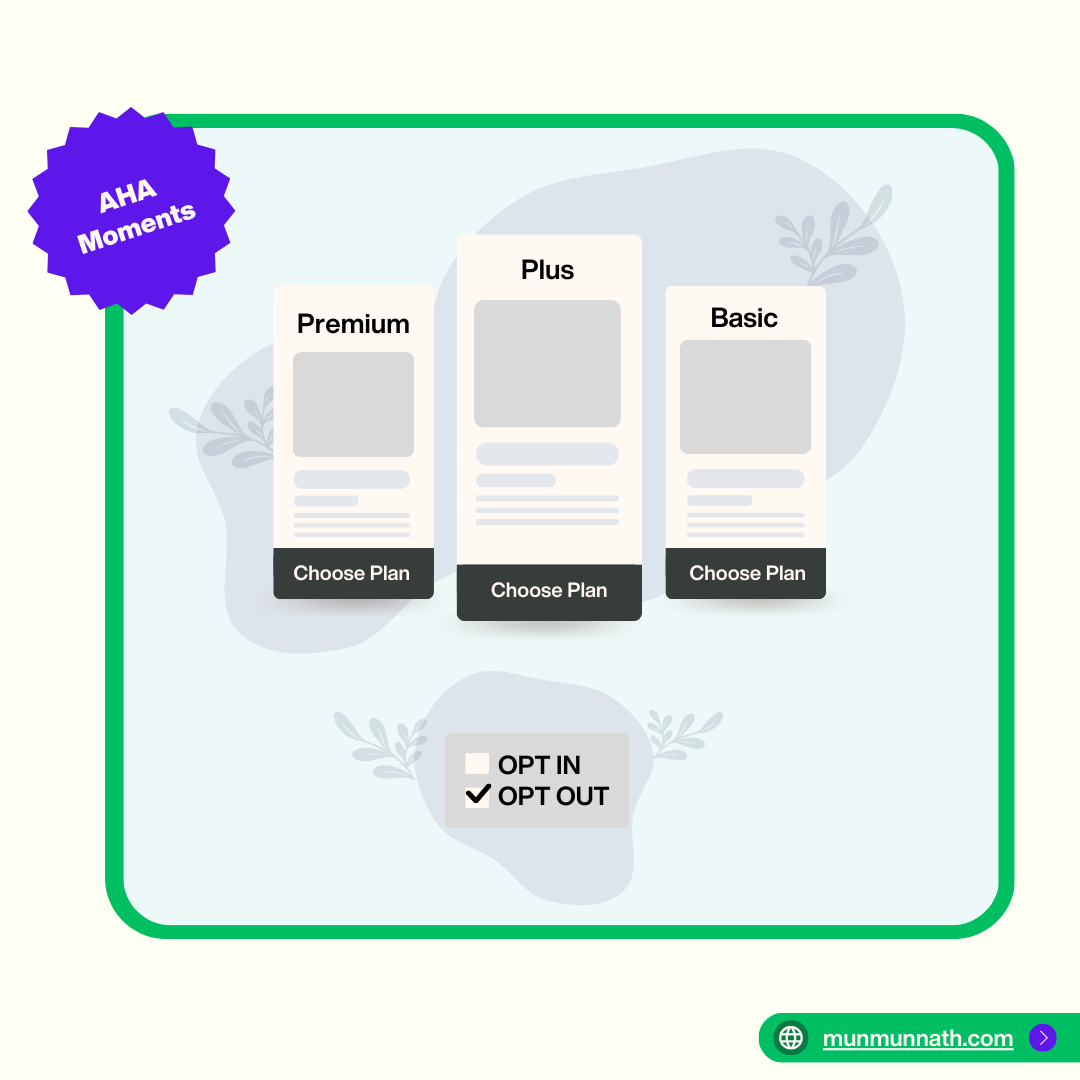6. Five Simple Nudges Every Marketer Must Know!
Behavioral science hacks to guide your users to make better decisions.
My last newsletter was about Cognitive Load - the idea that humans struggle when overwhelmed with too much information. And in such situations, we may not make the best decisions.
However, there are six simple ways websites and apps can nudge their users to make better choices -
Offer Default Choice
Having a default choice can significantly influence decisions. For instance, countries where organ donation is the default option have higher donor rates. Similarly, enrollment rates are notably high when people automatically enroll in any scheme by default.
Dear Marketer - Do you want people to opt into anything? Make opt-in the default choice and make people explicitly choose opt-out. The friction to make a choice will make people remain opted-in. For example, in Amazon Books, the option for ‘paperback’ is usually pre-selected vs the digital version.
Fit in and Follow
People seek to conform to social norms for acceptance. In hotel settings, signage stating that "9 out of 10 guests choose to reuse their towels" is more effective in encouraging reuse than messages emphasizing environmental benefits. This taps into the psychological need for individuals to align their behavior with perceived social norms.
Dear Marketer - Do you want people to sign up for your newsletter? Tell them how many people have already signed up. I will use this hack once I have a respectable figure to share!
Say It, Do it.
Humans make better decisions for the future than in the present. For example, pre-ordering a healthy meal creates a commitment that makes it harder to change one's mind later. If the decision is prepaid and irreversible, the commitment to the healthier option becomes stronger.
Asking individuals about their intentions increases the likelihood of them following through. In the context of voting, if people express their intention to vote when asked, the probability of them actually voting tends to rise. This phenomenon highlights the impact of conscious planning on subsequent actions.
Dear Marketer - To increase orders for a product, simply ask people to pre-order by committing a small fee. Offer early bird rewards. Or, if you are offering financial products, ask people about their financial plans—or travel goals. Making people think about the goals that your products can help them achieve will increase the likelihood of them considering your product.
Remember the Wins
People often forget their past behaviors and the outcomes. Reminding consumers of monthly savings achieved through night-time tariffs is a practical example. This reminder prompts individuals to recognize the positive consequences of their past decisions, encouraging them to continue energy-saving behaviors in the future.
Dear Marketer - Want users to re-order your product? Remind them how much they saved when they ordered last time.
Visibility of Options
Placing healthier food options at eye level in cafeterias or supermarkets while positioning less healthy options in less accessible locations utilizes the "choice architecture" principle. This strategy subtly guides individuals towards healthier choices by making them more visible and accessible without restricting their options. It leverages the natural inclination to choose items within immediate sight.
Dear Marketer - Place the products you want users to choose more prominently or first among the list. Data shows more people choose the first items of the list significantly more than other choices. Apple’s homepages are a good example of this idea - they usually highlight only one product as the hero.
The simplicity of these nudges ensures they are easy to implement, require fewer resources, and, most importantly - are scalable with the growth of the users.







